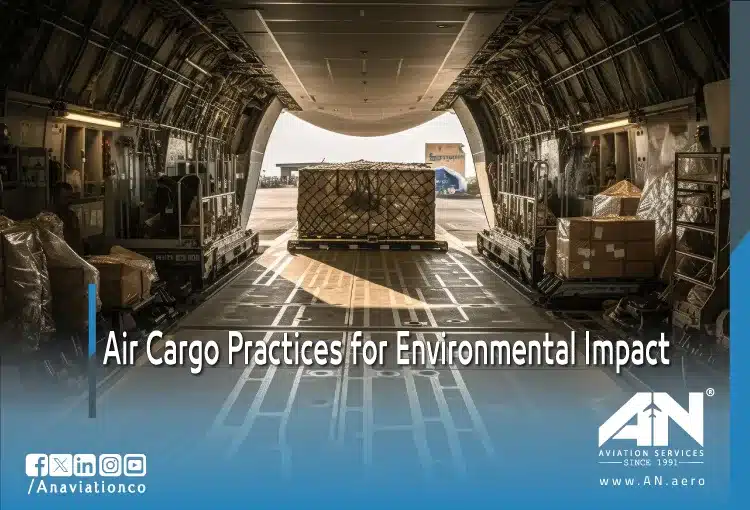
Air cargo is the transportation of goods by air. It is a critical component of the global supply chain, allowing businesses to transport goods quickly and efficiently over long distances. Air cargo is also essential for the transportation of perishable goods, such as food and pharmaceuticals.
Air cargo is typically transported in the belly of passenger aircraft, but there are also dedicated cargo aircraft that are designed to carry large volumes of air freight. Air cargo shipments are typically booked through freight forwarders, who handle all aspects of the transportation process, including documentation, customs clearance, and ground transportation.
How can we improve sustainability in aviation industry?
Improving sustainability in the aviation industry has many challenges that requires concerted efforts from various stakeholders. Here are practical steps to enhance sustainability:
Invest in Sustainable Aviation Fuel (SAF):
Incorporate a higher percentage of Sustainable Aviation Fuel in aircraft operations. SAF, derived from renewable sources, has the potential to significantly reduce carbon emissions compared to traditional aviation fuels.
Enhance Aircraft Efficiency:
Encourage the development and use of more fuel-efficient aircraft. Advancements in technology and design can contribute to reduced fuel consumption and emissions, promoting sustainability in air travel.
Carbon Offsetting Programs:
Embrace carbon offsetting programs to compensate for unavoidable emissions. Invest in projects that capture or reduce carbon emissions, contributing to a net-zero or carbon-neutral aviation industry.
Investment in Green Infrastructure:
Direct investments towards developing green infrastructure at airports. Implement energy-efficient facilities, renewable energy sources, and waste management systems to minimize the environmental footprint of aviation operations.
The Current State of the Cargo Air Industry
As the lifeblood of international supply chains, the air cargo industry has played a pivotal role in global trade. However, this has come at the expense of increased carbon emissions and other negative environmental impacts. The efficient aircraft that enable swift air freight also contribute significantly to global carbon emissions, raising concerns about the industry’s long-term sustainability.
1. Sustainable Initiatives in the Aviation Industry
Recognizing the need for change, the air cargo industry has been actively involved in global initiatives to minimize its environmental impact. From implementing carbon offset programs to exploring sustainable aviation fuel (SAF), the industry is exploring diverse avenues to offset its negative impacts. These initiatives not only cater to immediate environmental concerns but also align with the broader goals of sustainable development.
2. Efficient Aircraft and Sustainable Air Freight
Efficiency is a cornerstone of sustainability. The quest for more efficient aircraft has become a focal point for air cargo carriers. New technologies and design innovations aim to optimize fuel consumption and reduce emissions, making air freight a more sustainable mode of transportation.
3. Carbon Offset Programs
To compensate for emissions, many air cargo companies are investing in carbon offset programs. These initiatives involve investing in projects that reduce or capture an equivalent amount of carbon emissions, effectively neutralizing the negative impact of air transport. While not a long-term solution, carbon offset programs offer an immediate step towards sustainability.
4. Sustainable Aviation Fuel (SAF)
One of the most promising developments in the air cargo industry is the advent of Sustainable Aviation Fuel (SAF). Derived from renewable resources, SAF has the potential to significantly reduce carbon emissions. As technology advances and production scales up, SAF could become a staple in the air cargo industry, fostering a more sustainable future.
What are the pillars of air cargo sustainability?
The pillars of air cargo sustainability encompass various elements crucial for addressing the industry’s environmental, social, and economic impact.
Key aspects include efficient operations, the integration of Sustainable Aviation Fuel (SAF), technological innovation, participation in carbon offsetting programs, regulatory compliance, environmental stewardship, supply chain transparency, community engagement, workforce well-being, and an overarching commitment to continuous improvement.
Prioritizing these pillars is essential for steering the air cargo industry toward a more sustainable future, balancing global trade demands with environmental responsibility and social well-being.
Challenges and Solutions
Despite the strides made, the industry faces challenges in implementing sustainable practices. Cost implications, technological barriers, and global coordination pose hurdles. Solutions lie in continued collaboration among aviation companies, regulatory bodies, and stakeholders to overcome these challenges and foster a culture of sustainability.
Cost Implications:
Implementing sustainable practices often incurs initial costs, posing a challenge for companies in industries like aviation. The transition to eco-friendly technologies or fuels may require significant investments, impacting short-term financial considerations.
Technological Barriers:
Technological advancements are integral to sustainability, but barriers such as limited availability or scalability of green technologies can impede progress. Companies may face challenges in finding suitable alternatives that meet both environmental and operational requirements.
Global Coordination:
Achieving sustainability in sectors like aviation demands global cooperation. Challenges arise due to differing regulations and standards across regions, making it difficult to establish uniform practices and impeding collaborative efforts.
Resistance to Change:
Resistance to change within organizations and industries can hinder the adoption of sustainable practices. Established routines and traditional processes may be resistant to modification, necessitating efforts to overcome inertia and promote a culture of sustainability.
Conclusion
In conclusion, the air cargo industry stands at a crossroads, facing the imperative to balance the demands of world trade with the necessity for sustainable practices. Through a combination of efficient aircraft, carbon offset programs, and the promising prospect of Sustainable Aviation Fuel, the industry can pave the way for a greener future. Embracing cargo sustainability is not just an ethical choice; it’s a strategic investment in the longevity of air transport on a global scale.

